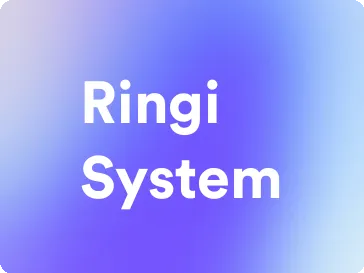Ringi System: A Productivity Tool Transforming Decision-Making
This guide will walk you through the essential elements of using ringi system - the productivity method to keep your team productive and engaged.
Try Lark for Free
The Ringi system is a powerful and widely respected method for reaching consensus and making decisions in organizations, especially in Japan. This article will explore the origins, key aspects, benefits, and drawbacks of the Ringi system, and provide a comprehensive guide on how to implement it effectively. Whether you are an individual looking to improve your decision-making process or a business leader seeking a structured approach to consensus building, understanding the Ringi system can significantly enhance your productivity and efficiency.
What is the Ringi System?
The Ringi system is a consensual decision-making process that originated in Japan. It involves a hierarchical structure through which proposed plans or decisions are circulated for review, approval, or rejection. The system ensures that decisions are thoroughly vetted and that input is obtained from multiple stakeholders within an organization. This collaborative approach fosters transparency, accountability, and buy-in among participants.
The Origin of Ringi System
The Ringi system can trace its origins to Japanese business practices, where decision-making is deeply rooted in hierarchical structures and consensus building. It has been refined and adapted over the years to promote more inclusive and participatory decision-making processes within organizations.
Who is the Ringi System for?
The Ringi system is ideal for organizations that value consensus and input from different levels of management. It is particularly beneficial for companies with complex decision-making processes, as it ensures that all stakeholders have a chance to voice their opinions and concerns.
Pros and Cons of Ringi System
Pros
- Enhanced Decision Quality: Involving multiple perspectives often leads to more comprehensive and robust decisions.
- Improved Buy-In: Stakeholder involvement increases the acceptance and implementation of decisions.
- Transparency and Accountability: The system promotes transparency as decision documentation circulates throughout the organization.
- Consensus Building: It fosters a collaborative culture and strengthens team dynamics.
Cons
- Time-Consuming: The process can be slow, especially when it involves numerous levels of approval.
- Potential for Bottlenecks: In some cases, decisions may get stuck at certain levels, causing delays.
- Resource Intensive: Ringi requires significant administrative effort to manage and document the decision-making process.
Use Lark to unleash your team productivity.
Getting Started with Ringi System
To implement the Ringi system effectively, organizations need to follow these essential steps:
- Identify Decision Points: Determine which decisions or plans require input from multiple stakeholders.
- Define Approval Levels: Establish clear hierarchies and approval thresholds for different types of decisions.
- Document the Process: Develop a standard process for circulating and documenting decision proposals.
- Training and Education: Educate stakeholders about the Ringi system and their roles within it.
- Implementation and Evaluation: Introduce the Ringi system gradually and reassess its effectiveness over time.
Step-by-Step Guide for Ringi System
Step 1: Identify Decision Points
Identify key decision points and categorize them based on their impact and the level of stakeholder involvement required.
Step 2: Define Approval Levels
Establish clear criteria for approval levels, ensuring that decisions are escalated appropriately based on their significance.
Step 3: Document the Process
Create standardized templates and documentation procedures to ensure consistency and transparency in decision circulation and approval.
Step 4: Training and Education
Conduct comprehensive training sessions to educate stakeholders about their roles and responsibilities within the Ringi system.
Step 5: Implementation and Evaluation
Gradually introduce the Ringi system and regularly evaluate its effectiveness, making adjustments as necessary to improve the process.
Actionable Tips for Ringi System
- Encourage open communication and feedback throughout the decision-making process.
- Leverage technology to streamline the circulation and approval of decision proposals.
- Regularly review and update the approval thresholds and decision categories based on organizational needs and feedback from stakeholders.
Learn more about Lark x Productivity
Do's and Dont's
| Do's | Dont's |
|---|---|
| Encourage participation at all levels | Ignore feedback or concerns from stakeholders |
| Establish clear approval hierarchies | Overcomplicate the decision approval process |
| Document decisions and feedback thoroughly | Rush through the decision-making process |
| Regularly evaluate and optimize the system | Rely solely on the Ringi system for all decisions |
Use Lark to unleash your team productivity.
Conclusion
The Ringi system offers a structured and inclusive approach to decision-making, fostering consensus, transparency, and accountability within organizations. By embracing the collaborative principles of the Ringi system, businesses can drive more informed and well-accepted decisions, leading to improved productivity and organizational effectiveness.
